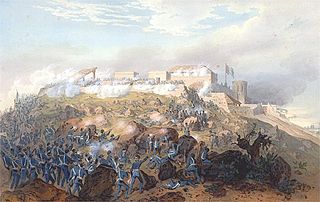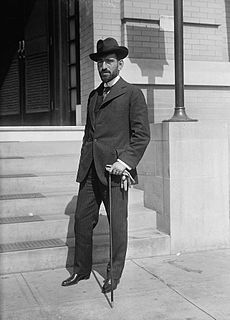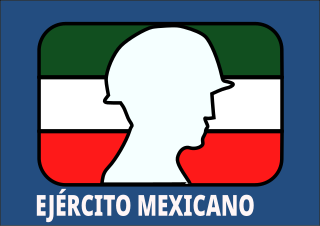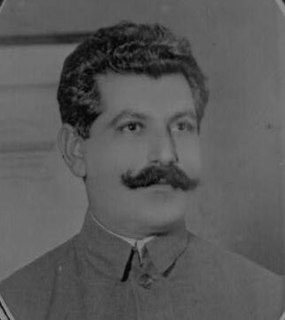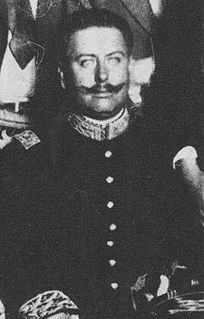Biography
He was born in San Miguel de Allende, Guanajuato on October 2, 1884. In 1905 he entered the Military Candidate School, after which he was assigned to the regiment of light artillery; he joined in 1906 as a second lieutenant of artillery. The March 18, 1909 amounted to tactical artillery lieutenant, being destined to Presidential Staff, ascending the September 12, 1911 to Captain second. But being an officer of the Federal Army, he sympathized with Maderismo, which became part of the General Staff of Francisco I. Madero.

San Miguel de Allende is the name of a municipality and its principal city, both located in the far eastern part of Guanajuato, Mexico. A part of the Bajío region, the city lies 274 km (170 mi) from Mexico City, 86 km (53 mi) from Querétaro, and 97 km (60 mi) from the state capital of Guanajuato. The city's name derives from two persons: 16th-century friar Juan de San Miguel, and a martyr of Mexican Independence, Ignacio Allende, who was born in a house facing the city's central plaza. San Miguel de Allende was also a critical epicenter during the historic Chichimeca War (1540–1590) where the Chichimeca Confederation defeated the Spanish Empire in the initial colonization war. Today, an old section of the town is part of a proclaimed World Heritage Site, attracting thousands of tourists and new residents from abroad every year.

Guanajuato, officially the Free and Sovereign State of Guanajuato, is one of the 31 states which, with Mexico City, are the 32 federal entities of Mexico. It is divided into 46 municipalities and its capital city is Guanajuato. The largest city in the state is León.

Francisco Ignacio Madero González was a Mexican revolutionary, writer and statesman who served as the 33rd president of Mexico from 1911 until shortly before his assassination in 1913. He was an advocate for social justice and democracy. Madero was notable for challenging Mexican President Porfirio Díaz for the presidency in 1910 and being instrumental in sparking the Mexican Revolution.
In 1912, he participated in the campaign against Orozco and when it ended, he returned to the Presidential Staff. In 1913, he was arrested with President Francisco I. Madero, being sent to tank commanders and officers, who participated in the campaign against the Constitutionalists in the north. In late 1913, it adheres to the constitutionalists in Nuevo Leon with the rank of major.
In February 1914, he was promoted to Lieutenant Colonel, after fighting the Huerta forces in the state of Tamaulipas. In May, he took part in the assault of Tampico; and on July 29 in making Queretaro, where he was acting governor and military commander of the place. On August 1, he participated in making Celaya, rising to colonel. Fighting later that year against Villa's forces in Tampico as a brigadier general.

Tamaulipas, officially the Free and Sovereign State of Tamaulipas, is one of the 31 states which, with Mexico City, comprise the 32 Federal Entities of Mexico. It is divided into 43 municipalities and its capital city is Ciudad Victoria.
On May 6, 1915, he held the governorship of Queretaro again. He fought the stole. Rodolfo Fierro in Mariscala, recovering the city of Queretaro. In 1917, he was deputy for the state of Guanajuato. In 1919, he was governor of Guanajuato. In 1920 he became head of military operations in the states of Queretaro, Guanajuato and Michoacan. He was commander of the 1st, 11th, 17th and 28th Military Zones. In 1941, he was appointed ambassador of Mexico in Colombia. He died in Mexico City on December 1, 1950, when he was commander of the Legion of Mexican Honor.




